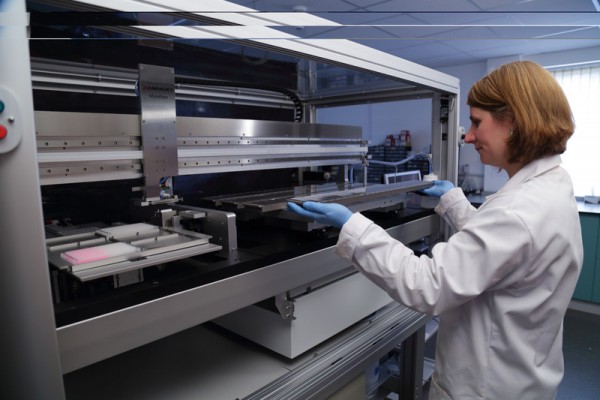DNA microarrays have become a useful and powerful tool in the microbiology industry. Because of their high levels of precision and the large number of DNA samples that they can house, microarrays are one of the most important items for researchers
Microarray production requires extreme precision and an advanced manufacturing technique. Attention needs to be paid to both biological and physical resources, including DNA libraries, robotics and qualified employees. While the process might be painstakingly precise and requires high maintenance, intense labor and an excellent quality and quantity, the arrays made for scientist’s eases their research immensely.
Depending upon the costs, type of scientific inquiry, customization requirements and the number of probes under inspection. Microarrays can have ten probes, or up to 2.1 million micrometer probes, made my commercial vendors.

Types of Microarrays
There are many types of microarrays available to the research and scientific community. The most significant difference in their manufacturing is whether or not they are specially arranged on the surface or are coded beads. Two of the main types or microarray formations are the traditional and the bead array.
- Traditional array is a collection of microscopic spots that have thousands of identical and specific probes attached to either a solid glass, plastic or silicon surface.
- The bead array is a collection of microscopic beads each with a specific and ratio of a number of dyes. These do not interfere with the fluorescent dyes used by the researchers.
Manufacturing of Microarrays
The manufacturing of microarrays can be done in many ways, including printing with fine pointed pins into glass slides, photolithography and using dynamic micro-mirror devices.
Spotted Microarrays
In spotted microarrays, the probes are oligonucleotides, cDNA or pieces of PCR products that correspond to mRNAs. The probes are sterilized prior to being deposited on the array and are “spotted” onto glass surface. The most common approach of manufacturing is the use of finely shaped pins and needles that are dipped into the wells containing the probes. This is done by a robotic arm to maximum precision, and to get the probe to the designated location. This provides the researchers with a low cost microarray that is capable of handling a vast population of samples which can be customized for different studies.
Oligonucleotide microarrays
In oligonucleotide microarrays, the probes are short designed to match the sequence of known of other frames. The term ‘oligonucleotide array’ refers to a technique during the manufacture. Oligonucleotide arrays are printed in short oligonucleotide sequences designed to represent a single gene. The sequences maybe lengthier or shorter, depending on the desired purpose. The lengthier probes are more specific to targeted genes and the short ones can be printed in higher density, therefore easier to get.
In the last ten years, the use of micro arrays have gone from being to a widely used feature in DNA and gene sequencing. It has helped in the research and diagnosis of many diseases, by letting scientists see the effects of different drugs on the mutated genome.
Being a researcher and microbiologist, Maklom Ramsay has written articles for microarrays for many years. He recommends the use of this website for all microarray related services.
